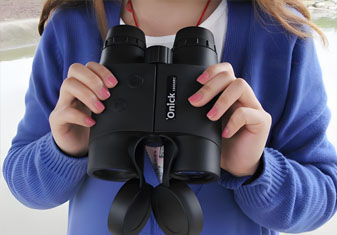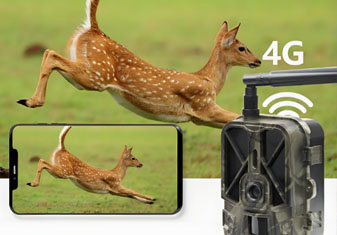Kann Infrarot-Wärmebildtechnik in Wände und Glas eindringen? Was Kann Infrarot-Wärmebildtechnik eindringen?
Wärmebildkameras sind die "Augen der Nacht" und eine wichtige Erweiterung des menschlichen Sehvermögens. Wärmebildkameras werden nicht durch sichtbares Licht beeinträchtigt und können Dunkelheit, Blendung, Dunst und dichten Rauch durchdringen und haben ein sehr breites Anwendungsspektrum.

Thermal können kein normales Glas durchdringen, sondern spezifisches wärmeübertragendes Glas durchdringen.
Introduction Wärmebildtechnik Technology
Thermal Bildgebungstechnologie nutzt die von einem Objekt emittierte Infrarotstrahlung, um seine Oberflächentemperaturverteilung anzuzeigen. Das Infrarot wird durch Detektoren in elektrische Signale umgewandelt und dann in Bilder umgewandelt, die auf dem Bildschirm angezeigt werden. Daher wird es häufig verwendet, um die Temperaturverteilung auf der Oberfläche menschlicher Körper, Gebäude, elektronischer Geräte usw. zu erfassen.
Kann die Wärmebildtechnik herkömmliches Glas nicht durchdringen, da Glas den größten Teil der Infrarotstrahlen reflektiert und nur ein sehr kleiner Teil der Infrarotstrahlen das Glas durchdringen kann. Wenn sich das Objekt hinter dem Glas befindet, kann die Verteilung der Oberflächentemperatur bei der Wärmebilderkennung daher nicht genau dargestellt werden. Einige spezielle wärmeübertragende Gläser können jedoch Infrarotstrahlen übertragen, was die Wärmebildtechnik zu einem Durchbruch macht. Diese Art von wärmeübertragendem Glas kann die Wärmeübertragung reduzieren, ohne die Lichtdurchlässigkeit zu verringern. Viele Hersteller stellen diese Art von Glas her, das in der Solarenergieindustrie, in energiesparenden Gebäuden usw. weit verbreitet ist.

Scope Anwendung der Wärmebildtechnik ist in den Bereichen Sicherheit, Elektrizität, Medizin und anderen Bereichen weit verbreitet. So kann beispielsweise die Installation von Wärmebildkameras an öffentlichen Orten die Körpertemperatur von Menschen in Echtzeit überwachen und die Ausbreitung von Infektionskrankheiten rechtzeitig verhindern; bei der Erkennung von Energieanlagen kann die Temperatur der Geräteoberfläche in Echtzeit überwacht werden, um Geräte zu finden, die rechtzeitig ausfallen könnten.

0In Zusammenfassung: Während normales Glas kein Infrarotlicht durchlassen kann, hat das Aufkommen von spezifischem wärmeübertragendem Glas ein breiteres Anwendungsspektrum für die Wärmebildtechnik eröffnet.
Was kann Wärmebildkameras sehen through
Can Wärmebildtechnik durch Rauch sehen?
Ja, Wärmebildkameras können Wärme durch Rauch erkennen und werden häufig von Feuerwehrleuten verwendet. Rußpartikel im Rauch können sichtbares Licht effektiv blockieren, aber Infrarotstrahlung durchlassen, so dass Feuerwehrleute oder andere Ersthelfer in rauchgefüllten Umgebungen navigieren können. Menschen an Türen werden durch Rauch im sichtbaren Spektrum verdeckt, können aber durch Wärmebilder leicht erkannt werden.

5Can Wärmebildkameras sehen durch Nebel?

7Can Wärmebildkameras sehen durch Bäume?
Wärmebildkameras können Objekte nicht durch Baumstämme erkennen, aber Wärmebildkameras können helfen, Menschen oder Tiere in bewaldeten Gebieten zu erkennen. Such- und Rettungsteams verwenden oft Wärmebildtechnik, um Wärmesignaturen zu erkennen, wenn sie große Gebiete in der Wildnis durchsuchen. Wärmebildtechnik kann nicht durch Bäume (oder Holz) sehen, aber sie kann helfen, Menschen in bewaldeten Gebieten zu erkennen, wo Wärmesignaturen stärker auffallen als sichtbare Bilder. Kann Wärmebildkameras durch Kunststoff sehen?
Halten Sie eine dünne, undurchsichtige Plastikfolie (wie einen Müllsack) vor ein warmes Objekt oder eine warme Person. Infrarotstrahlung durchdringt den Kunststoff, so dass die Wärmebildkamera alles dahinter erkennen kann, Dies funktioniert jedoch nur bei sehr dünnen Kunststoffen - dickere Kunststoffe blockieren Infrarotstrahlung.
Kann die Wärmebildtechnik im Dunkeln sehen?
Ja! Die Wärmebildtechnik ist völlig unbeeinflusst von Dunkelheit und benötigt kein sichtbares Licht, um Wärme zu visualisieren. CCTV-Aufnahmen und Wärmebildtechnik zeigen, dass die Wärmebildtechnik kein sichtbares Licht benötigt, um ein Bild zu erzeugen.





















